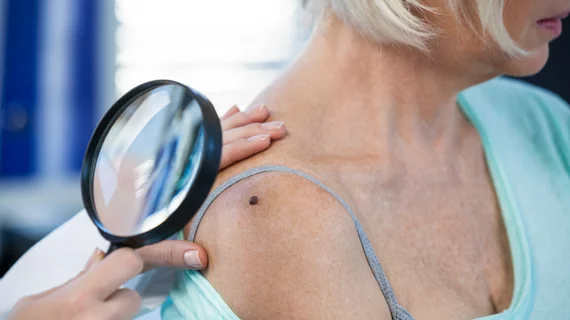Machine learning uses CT images to predict survival odds of melanoma patients
Machine learning is a beneficial decision-making tool for providers treating patients with metastatic melanoma. Using information from CT scans, artificial intelligence accurately predicted a patient's overall survival after receiving immunotherapy, new evidence shows.
Currently, the effectiveness of immunotherapy treatments is typically based on changes (or lack thereof) in tumor size visualized via CT scans and classified using Response Evaluation Criteria in Solid Tumors 1.1 (RECIST 1.1). However, there are challenges with this method due to the atypical response patterns of some tumors.
“Modified RECIST in cancer immunotherapy (iRECIST) requires confirmation of progressive disease on subsequent scans. However, neither standard RECIST 1.1 nor iRECIST reliably estimate overall survival from immune checkpoint blockade (ICB), and both rely solely on anatomical information regarding tumor size,” Laurent Dercle, MD, PhD, with the Department of Radiology at Columbia University Medical Center, and co-authors explained.
Radiomics and machine learning provide value in these scenarios, as such tools can extract information beyond just tumor size to quantify how patients might respond to therapeutics. And that is exactly what the researchers did.
“We tested the hypothesis that a radiomic signature derived from tumor size, density, and shape and its change as treatment is administered can estimate overall survival in patients with melanoma,” the experts wrote.
The researchers retrospectively applied radiomic features and a machine learning signature to the baseline and three month follow-up CT scans of 575 patients in an attempt to predict survival odds at the six month mark. All patients included had been diagnosed with advanced melanoma and were receiving cancer therapeutics.
A signature was created using four imaging features related to both tumor size and tumor changes. Overall survival (OS) in the validation set using the signature reached an AUC of 0.92, supporting the hypothesis that machine learning can provide an accurate early readout for OS. This was more accurate than the standard method, which had an AUC of 0.80.
“Our signature could give clinicians in practice an early readout of the likelihood of success when treating patients with advanced melanoma,” the experts suggested. “This new approach could complement other response assessment metrics and increase the efficiency of drug discovery for cancer.”
You can view the detailed research in JAMA Oncology.

